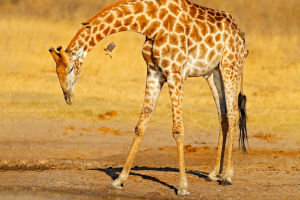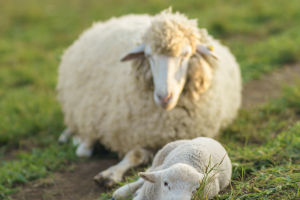
Elk in Wetlands

The slanting sun stops on the treetops, spreading a warm glow over the vast wetlands, gently brushing against fragrant grass, swaying the hazy reeds, and shattering into layers of golden ripples on the canal's surface.
A group of elks strolls through the water grass forest, exuding the essence of the Creator, with their bodies bathed in the orange-red evening glow, outlining graceful and ethereal silhouettes with their vigorous movements.
The scene is set by the Yangtze River in early winter. Deep within the haze of history lies a convoluted legend about elks.
The elk is the only species of deer in the deer family and the elk genus. Its long and narrow face resembles that of a horse, its antlers resemble those of a deer but are slightly different from other deer species, its hooves are large like those of a cow, and its tail is thin and long like that of a donkey, hence its nickname "four unlike".
Related
 Antelopes, nature's agile elves, showcase elegance in diverse terrains, intertwining with humans to preserve Earth's biodiversity.
Antelopes, nature's agile elves, showcase elegance in diverse terrains, intertwining with humans to preserve Earth's biodiversity.
 Dragonflies: Masters of the Insect World" - A look at the incredible characteristics of these beneficial and fascinating insects.
Dragonflies: Masters of the Insect World" - A look at the incredible characteristics of these beneficial and fascinating insects.
 Some facts are cool, some are playful, and a few are a bit surprising.
Some facts are cool, some are playful, and a few are a bit surprising.
 Antarctica's emperor penguins, majestic and resilient, navigate a challenging journey in the icy expanse with exceptional breeding.
Antarctica's emperor penguins, majestic and resilient, navigate a challenging journey in the icy expanse with exceptional breeding.
 How do whales avoid suffocation while sleeping underwater?
How do whales avoid suffocation while sleeping underwater?
 The factors that affect a sheep's immunity.
The factors that affect a sheep's immunity.
Its antlers have a unique shape, with the branches at the front dividing into smaller branches, while the branches at the back hardly fork. It has a large head, a slender muzzle, a wide exposed part at the tip of the nose, small eyes, and very prominent suborbital glands. Its limbs are stout, with broad main hooves and well-developed dewclaws, making a loud clacking sound when walking.
Elks prefer marshy wetland habitats and feed on green grass and aquatic plants. They are sociable animals, good swimmers, and enjoy feeding on tender grass and aquatic plants. They mate and go into estrus in the summer, a season earlier than most other deer species.
In the autumn of 1865, the French naturalist and missionary David conducted a survey of flora and fauna in the southern suburbs of Beijing and inadvertently discovered elks in the Royal Hunting Grounds. He immediately realized that these were unfamiliar deer, possibly undocumented in animal taxonomy. David obtained two elks from the hunting ground guards for 20 taels of silver and had them made into specimens.
In 1866, he sent the specimens to the Paris Natural History Museum, where they were confirmed as a new species never before discovered, and an independent genus within the deer family. The Latin species' name was determined by the French zoologist Miller Edward, and from then on, elks were known as "David's deer".
Over time, elks kept in some European zoos began to die, and the population gradually declined. Starting from 1898, the 11th Duke of Bedford in England purchased all 18 elks originally kept in zoos in Paris, Berlin, Cologne, Antwerp, and other places, and released them into the 3,000-acre Woburn Abbey estate north of London. These 18 elks became the ancestors of all elks on Earth.

Many elks prefer to live near marshes and are among the most docile of all deer species. Even when they attack, violent collisions are unlikely to occur, the distance between the two sides during movement is not particularly great, and each duel lasts no more than 10 minutes. The defeated elk can only turn and leave, and the victorious elk cannot continue to pursue the defeated one. Due to their gentle nature, the likelihood of being captured and killed is higher.
Natural factors and factors inherent to elks are the reasons for the gradual reduction in the distribution area and population of elks, while human interference is the decisive factor leading to their extinction in the wild.